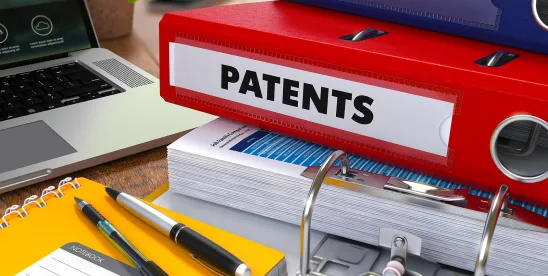The Federal Circuit’s recent decision in Global Health Solutions LLC v. Selner is its first review of a rare patent dispute resolution process under the America Invents Act (AIA). The decision serves as a warning that proving misappropriation of an invention is costly, evidence-heavy, and far from guaranteed. For inventors and companies working with partners, customers, and other third parties, Selner underscores the need for airtight documentation and filing patent applications before discussions with third parties.
On August 26, 2025, the Federal Circuit engaged in its first review of an AIA derivation proceeding at the Patent Trial and Appeal Board (PTAB) in Selner.[1] When Congress enacted the AIA in 2011, it shifted the United States from a first-to-invent system to a first-to-file system. Under the AIA a first inventor is not entitled to a patent if a second inventor files his or her patent application first. However, the AIA provides a small exception to a second filer who invented first – where the first filer derived the invention from the second filer. A second filer can then pursue his or her claims in an AIA derivation proceeding. [2]
The matter previously involved a lengthy, complex proceeding at the PTAB. The PTAB found in favor of inventor Selner over inventor Burnam as to the inventorship of a patent application with claims directed to a method of preparing a biocidal ointment (Invention). The PTAB found: (a) inventor Burnam proved that he conceived of the Invention and communicated it to inventor Selner on February 14, 2014; and (b) Selner proved that he separately conceived of the Invention four hours earlier on that same day. The PTAB further concluded that Selner could not have derived the Invention from Burnam because Selner independently conceived of the Invention before Burnam’s communication.
In reviewing the PTAB’s findings, the Federal Circuit held that the derivation provision of the AIA requires the PTAB to “determine whether an inventor named in the earlier application derived the claimed invention from an inventor named in the petitioner’s application and, without authorization, the earlier application claiming such invention was filed.” [3] Further, the AIA inquiry is “whether the petitioner conceived and communicated the invention before the respondent filed his application.” [4] Thus, a petitioner “must produce evidence sufficient to show (i) conception of the claimed invention, and (ii) communication of the conceived invention to the respondent prior to respondent’s filing of that patent application.” Yet a respondent can defeat such a showing “by proving independent conception prior to having received the relevant communication”. [5]
Ultimately, the Selner court held that there was no error in the PTAB’s finding that Selner proved independent conception and had sufficient evidence to corroborate his conception. Recognizing that testimony from inventors in the context of a derivation proceeding might by overly imbued with self-interest, the Selner court explained that “[d]ocumentary or physical evidence that is made contemporaneously with the inventive process provides the most reliable proof that the inventor’s testimony has been corroborated” [6]. On this point, the Selner court held that the PTAB properly relied on emails from Selner pulled by his attorney’s law clerk that were contemporaneous with his earlier conception on February 14, 2014.
Selner offers some important takeaways for joint development, discussions with customers, and other third-party discussions involving inventive material. Foremost, there is substantial risk in engaging in collaborative inventive activities not governed by a joint development agreement (JDA) that identifies pre-existing intellectual property of the parties and ownership of inventions that result from the contemplated joint work. But in collaborative situations where a JDA is not in place or practical, Selner makes clear that a party should at least ensure that his or her inventive concepts and/or prototypes are documented in a manner sufficient for later corroboration. Of course, the safest approach is to simply avoid the need for a potential derivation proceeding; rather, the inventor should file a patent application covering the invention before any third-party discussions.
Footnotes
[1] Global Health Solutions LLC v. Selner, __ F.4th __, 2025 WL 2446374, Case No. 2023-2009, (Fed. Cir. Aug. 26, 2025).
[2] Under the AIA, a second filer can institute a derivation proceeding over a pending patent application or an issued patent at the PTAB or in federal court. See 35 U.S.C. §§ 135, 291.
[3] 35 U.S.C. § 135(b).
[4] Selner, at *5.
[5] Id.
[6] Selner, at *13 (quoting Sandt Tech., Ltd. v. Resco Metal & Plastics Corp., 264 F.3d 1344, 1350-51 (Fed. Cir. 2001)).






 />i
/>i
